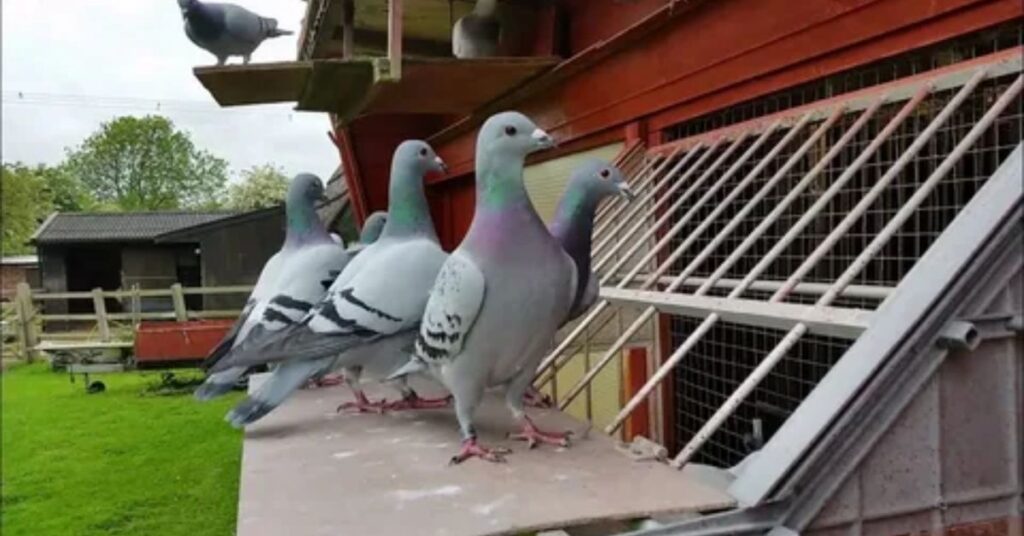After a long or intense flight, pigeons, especially those used for racing, need attentive post-flight recovery and care. Just like human athletes, pigeons experience fatigue, dehydration, and sometimes injuries after performance. Proper recovery ensures they’re ready for the next journey and helps maintain their health, energy, and motivation.
In this article, you’ll find a step-by-step guide with practical advice and helpful tips for post-flight care, including feeding strategies and how to tell when to seek help from a pigeon vet.
Why Post-Flight Recovery Matters
Racing and long-distance flying put enormous stress on a pigeon’s body. The result? Water loss, nutrient depletion, and sometimes emotional exhaustion. If ignored, these issues can slow down recovery and impact future performances.
Additionally, predator attacks during flight, such as those from hawks or falcons, may cause injuries that need immediate attention. Timely intervention is critical.
How to Feed Racing Pigeons for Recovery
When your pigeon lands:
- Do not feed it immediately.
- Allow the bird to rehydrate first.
- Feeding too early can overburden the digestive system.
- Hydration comes first.
- Offer plain water in a shaded, slightly humid environment.
- If your pigeon appears weak, use a clean cloth soaked in lukewarm water to moisten its beak.
- After 20 minutes, administer 5–7cc of water with a dropper or syringe.
- Wait for droppings before feeding.
- Pooping indicates digestive activity is back to normal.
- Feed quality grains.
- A light, nutrient-rich feed mix works best.
- Consider using almond-based feed for energy and recovery.
Feeding Sprint Racing Pigeons
Sprint racing pigeons require a balanced, energy-rich diet, but not overly fatty. Focus on grains that provide carbohydrates and fats without overloading the bird’s system.
Best grains for sprint pigeons:
- Corn
- Safflower
- Milo
- Wheat
- Rice
Avoid overfeeding legumes like peas and beans; keep them under 25% of the total mix. Salt-rich grit or mineral stones should be removed a day before racing and reintroduced after the flight to aid recovery.
Rest and Isolation
Once your bird is back in the loft:
- Provide a well-ventilated resting area.
- Keep the pigeon isolated if injuries are visible.
- Observe the bird for 24–48 hours before reintroducing training.
- Skipping the next training session may be necessary for full recovery.
Improving Pigeon Health After Flight
A pigeon’s health post-race directly impacts future performance. Don’t overlook signs of discomfort, stiffness, or weakness.
Massage Techniques:
- Use a warm cloth to gently massage the pigeon’s wings and body.
- Focus on tight muscle areas.
Feather Inspection:
- Examine for damage or missing feathers.
- Massage around tender areas to boost circulation.
Stress Relief:
- Use natural pigeon-safe supplements like Stress-Aid to help your bird relax.
Tracking Recovery Progress
Monitoring your pigeon’s behavior and vital signs is crucial:
- Is it standing and alert?
- Is the beak opening normally (indicates healthy breathing)?
- What’s the weight and posture like?
- Is the bird pooping normally post-hydration?
- Does it seem interested in its surroundings?
Make these checks within the first hour of return.
When to See a Pigeon Vet
Sometimes recovery requires professional help. Don’t hesitate to consult a pigeon vet if you observe any of the following:
- Pigeon refuses to drink or eat
- A bird can’t stand or maintain its posture
- There’s no poop within a few hours after drinking
- The bird shows excessive twitching or fatigue
- Obvious signs of high body temperature
Quick intervention may be the difference between a speedy recovery and a prolonged issue.
Motivational Recovery: Real-Life Anecdote
One breeder, James from Yorkshire, recalls a time when his top hen returned from a derby flight with one wing drooping. Instead of panicking, he followed a strict routine, hydration, massage, light feeding, and within 48 hours, she was back, fluttering with full energy. A month later, she clocked the top three in a 500-mile race. Consistency and calm care go a long way.
Final Thoughts on Post-Flight Recovery and Care for Pigeons
In summary, post-flight recovery and care for pigeons is about more than just letting them rest. It’s a complete process—hydration, nutrition, rest, and medical observation. It’s also about understanding your birds. Every pigeon has its rhythm and preference. By closely observing their behavior and health post-flight, you ensure they remain fit, fertile, and flight-ready.
Whether you’re prepping for the next big race or just want to keep your feathered friends in peak condition, this guide will help you confidently do so.
For more information, explore trusted pigeon care resources like Pigeon Vitality or Pigeon Insider.
FAQs
Q1: How to recover a pigeon after a race?
A: Begin with hydration, followed by light feeding, rest, and observation for signs of stress or injury.
Q2: How long does it take for a pigeon to recover?
A: Most healthy pigeons recover within 24 to 48 hours, though longer races may require up to 72 hours.
Q3: What is recovery medicine for pigeons?
A: Recovery medicine often includes electrolytes, probiotics, and natural supplements like Stress-Aid to support hydration, digestion, and stress relief.

